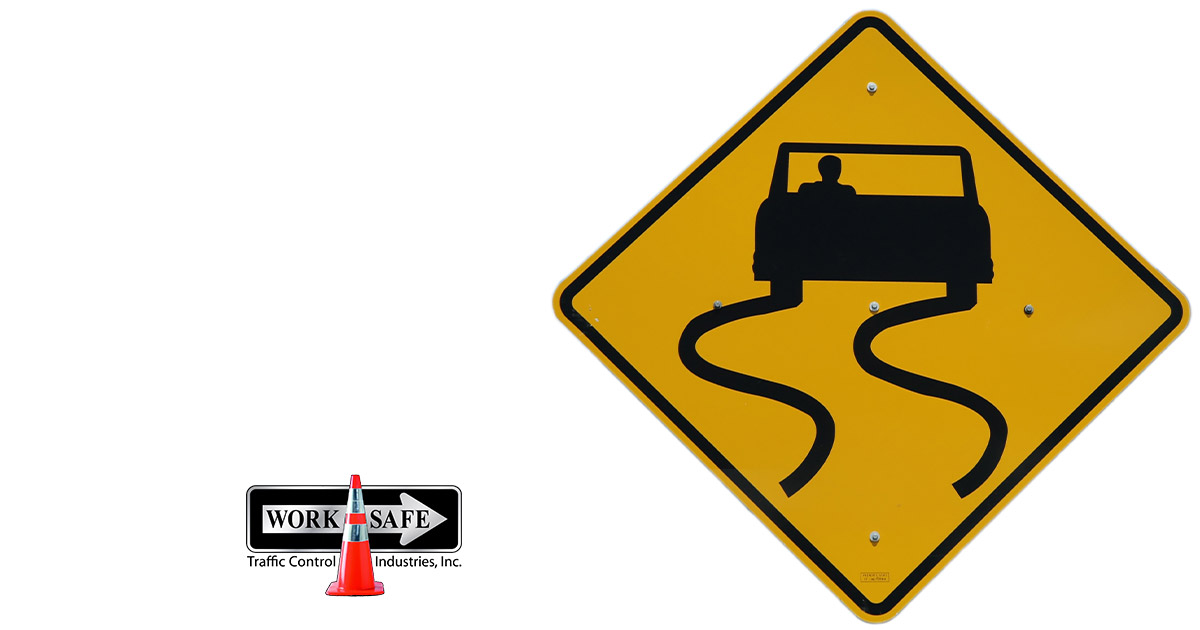
Warning signs, we see them every day as we drive, and if you drive enough you may barely even notice them. However, they require your undivided attention to keep you and your fellow travelers, pedestrians, and road workers safe.
What are Road Warning Signs?
It’s important to be able to immediately understand the information posted on placards along streets or highways, so the United States Department of Transportation Federal Highway Administration (FHWA) has set standards for both the color and shape of signs to ensure conformity. Additionally, many signs contain only symbols, providing instant communication in any language.
The color of road indicators signifies what type of information they contain. For example, warning signs have a yellow background with black lettering or symbols. The shape of a placard also conveys information. Most warning signs have a diamond shape for easy and quick recognition. However, there are exceptions, such as the rectangular sharp bend in the road indicator and the pennant-shaped No Passing Zone placard.
Importance of Warning Signs
The importance of warning signs cannot be overstated. They are strategically placed for your protection as well as the protection of others, warning drivers of approaching conditions that may be dangerous. They are there for a reason and are therefore important to heed.
10 Most Common Warning Signs
Here are 10 of the most common warning signs you are likely to see on the road:
1. Slippery When Wet
This indicator is diamond in shape, with the symbol of a car skidding to indicate the particularly slippery conditions of the pavement up ahead. The danger may be due to rain or ice, and drivers are warned to slow down appropriately. Be careful not to turn or change lanes suddenly, or brake too hard. You should slow down for turns, and increase the distance between your car and the one ahead.
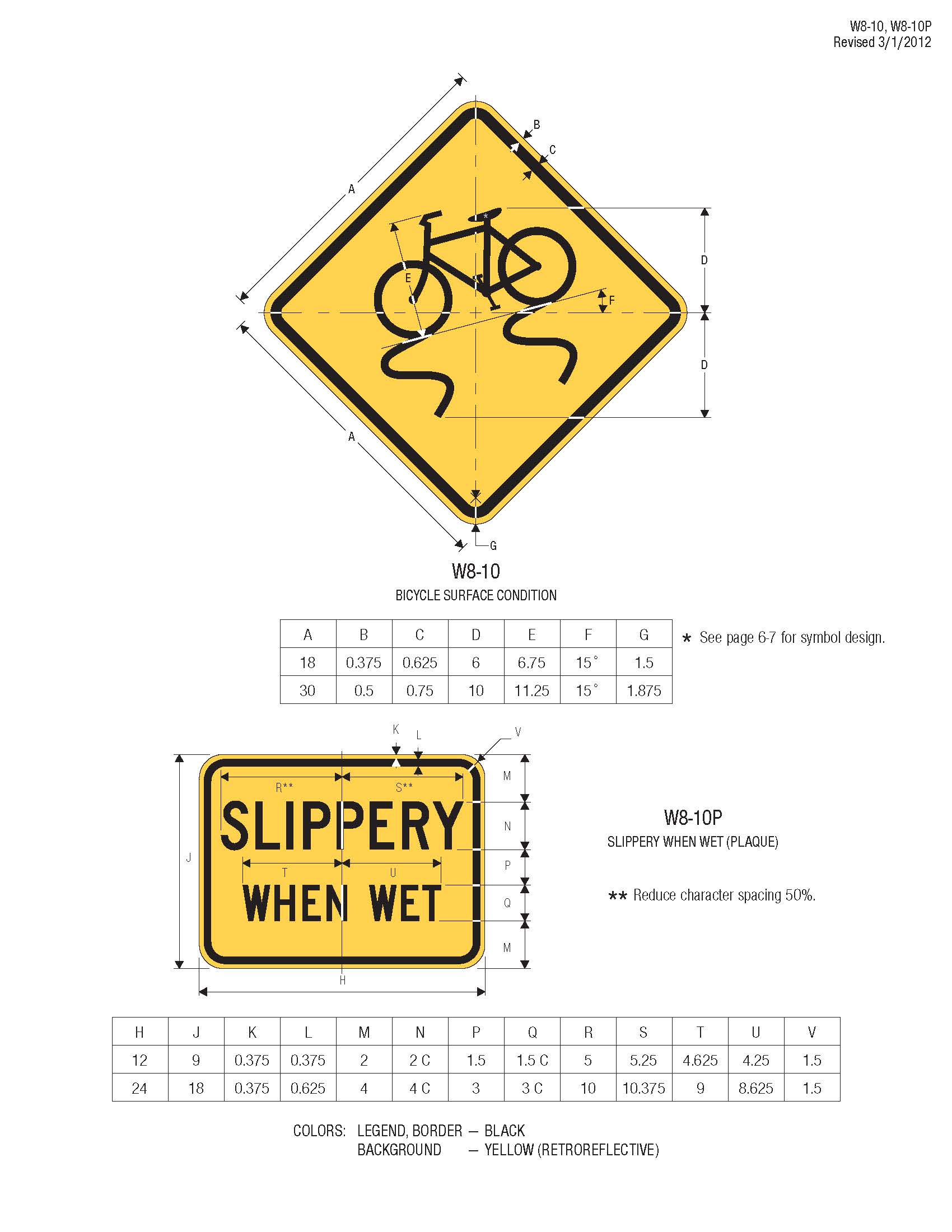
2. Traffic Signal Ahead
The Traffic Signal Ahead placard is another diamond-shaped sign with a 3-color traffic light depicted on it. When you see this, you should know to stay alert and be ready to slow down, anticipating the intersection and the possibility of a yellow or red light ahead.
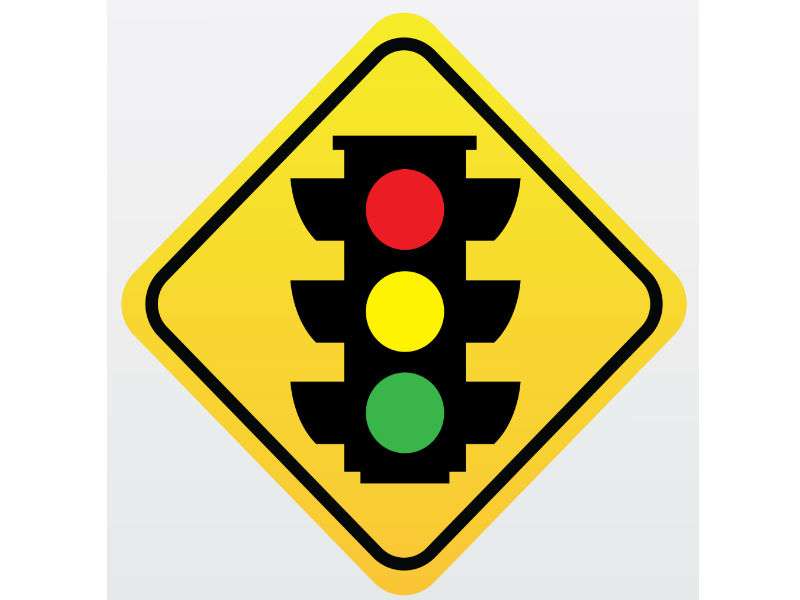
3. Stop Ahead
The Stop Ahead placard is warning you to slow down in anticipation of a full stop coming up. You’ll need to come to a complete stop before proceeding cautiously. This is also diamond-shaped.
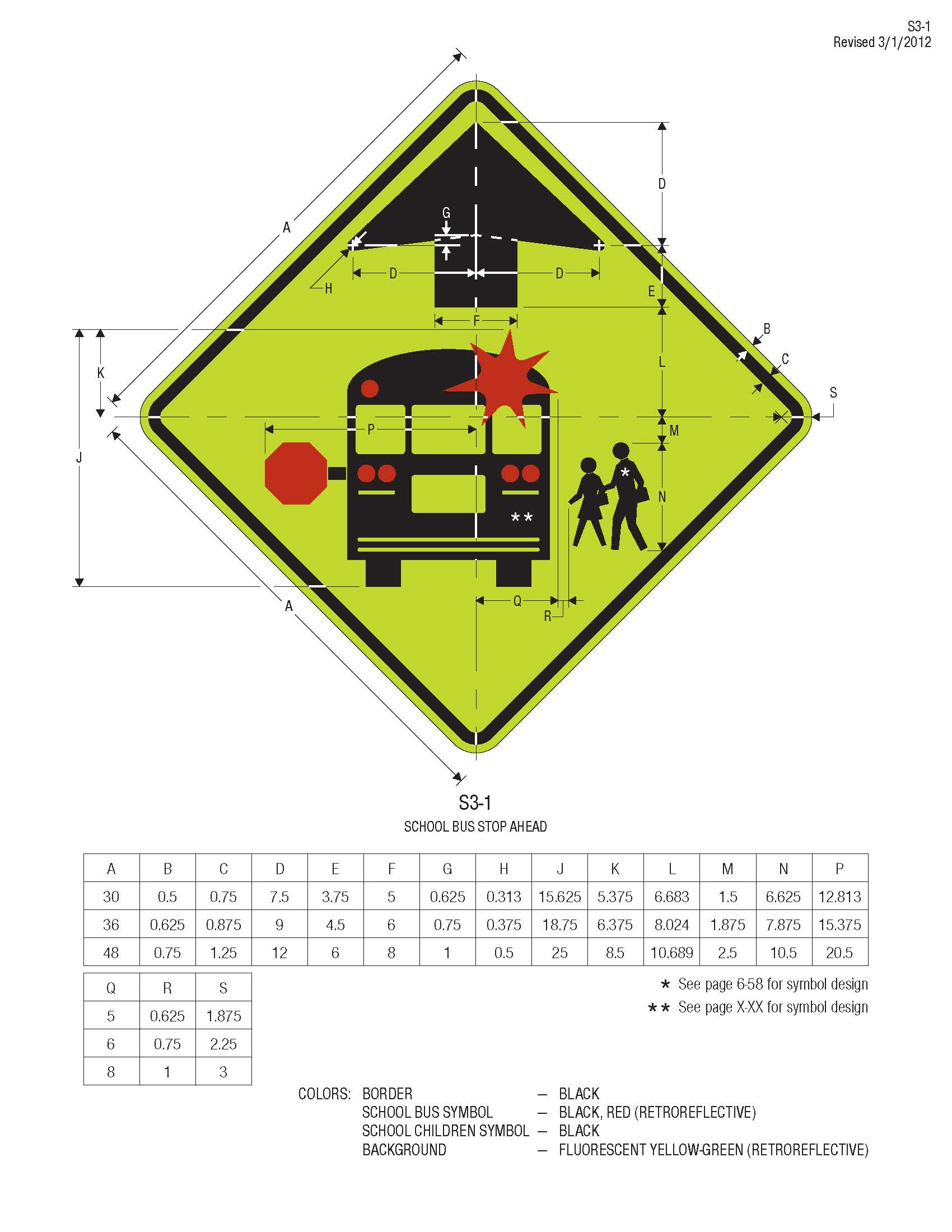
4. Left (or Right) Turn Ahead
A Left Turn Ahead placard warns you that the upcoming stretch of roadway curves to the left, so slow down and stay to the right. The same cautions apply with the Right Turn Ahead, only now you will want to stay to the left side of the street as you carefully approach the turn.
5. Sharp Curve to the Right (or Left)
This indicator is rectangular with a black arrow pointing in the direction of the curve. It indicates the road ahead is changing directions at an extreme angle, so you need to slow down considerably before you reach the curve.
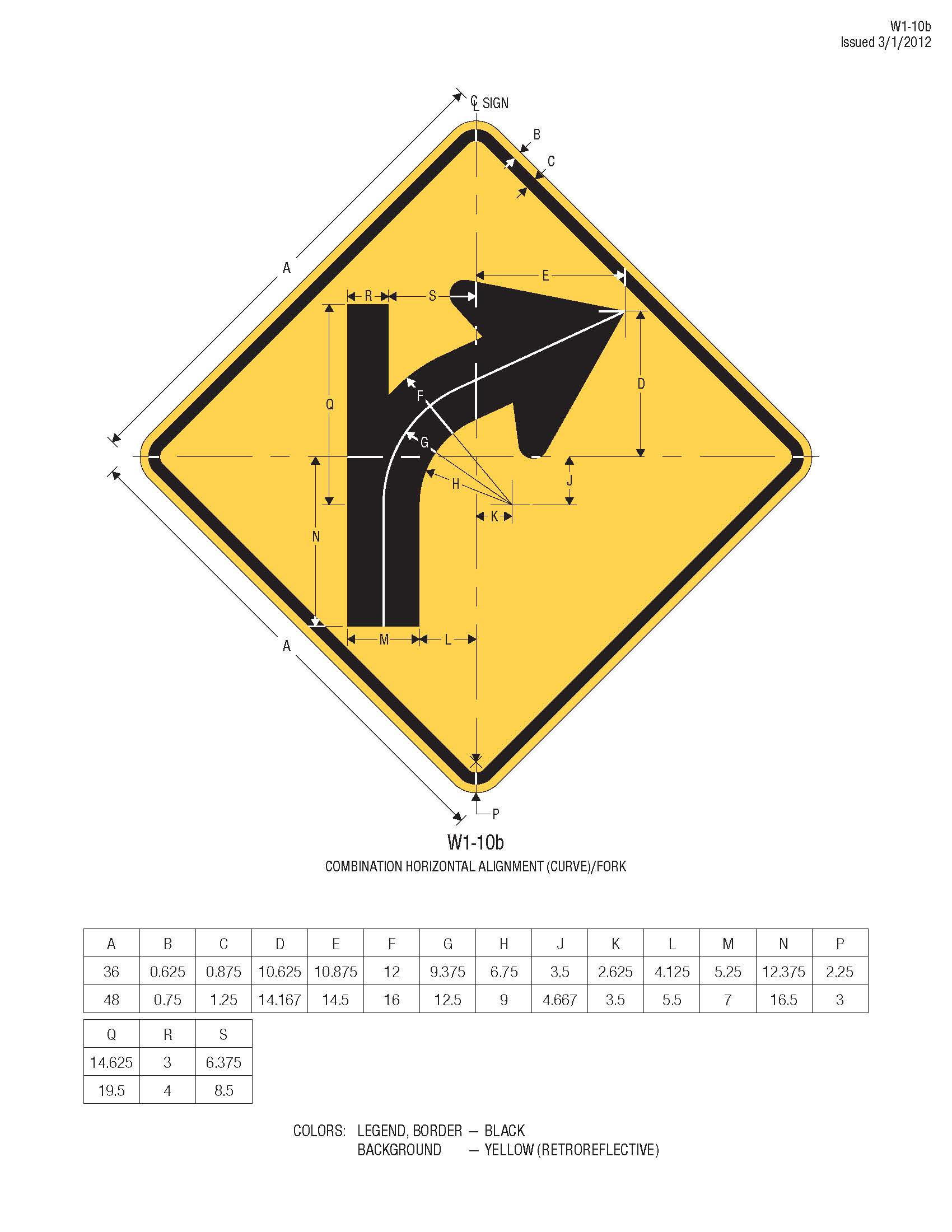
6. Merging Traffic
The Merging Traffic indicator will show you the direction the new traffic is coming from, usually from the right but not always. Be ready to either change lanes or to allow the oncoming traffic to safely merge into your lane. Merge placards often appear on expressways just before ramps, to allow safe entry onto the expressway. Drivers entering from the right must yield to traffic on the main route but be careful, not all drivers obey this rule.
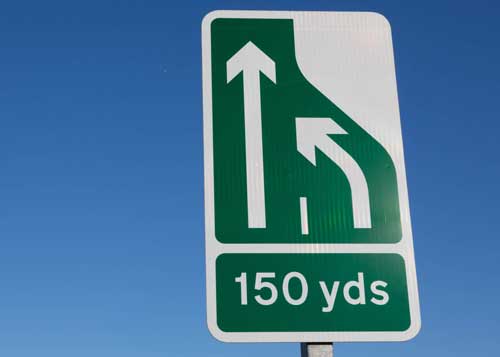
7. Advisory Speed on Exit Ramp
You’re driving at highway speeds, about to exit the highway, when you see the square or rectangular, orange and black “Exit Ramp” speed placard. You may be in a hurry and therefore fail to slow down enough to safely navigate the ramp, which is usually in the form of a curve, sometimes a steep curve. This placard advises you of what the safe speed is as you are exiting the highway, based on many factors.
Also, keep in mind that bad weather and poor conditions will determine a truly safe speed, which may be less than what is posted on it.
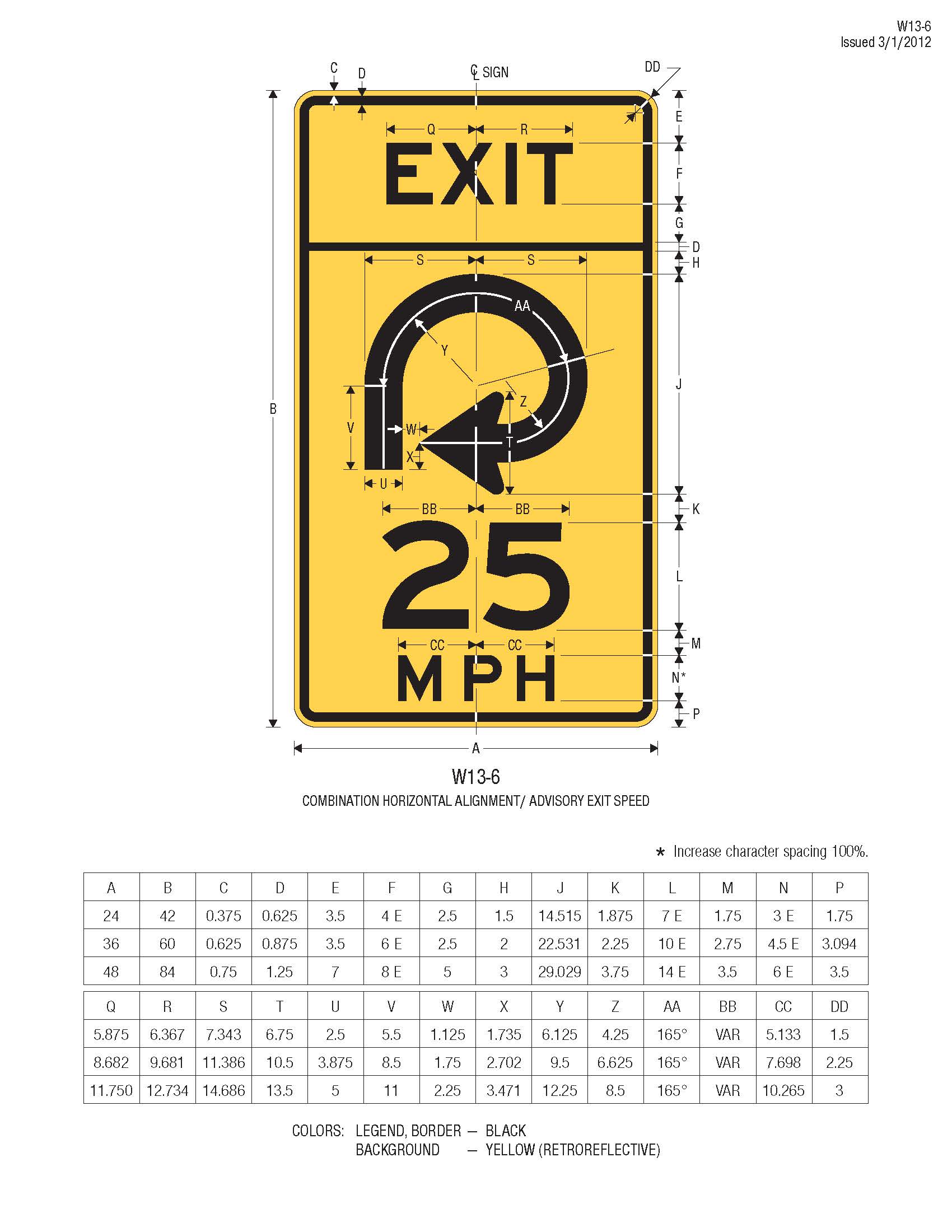
8. No Passing Zone
Another pennant-shaped, yellow and black indicator that indicates you’ve entered a stretch of highway or road where passing is illegal or unsafe. The indicator is on the left side of the street, facing the driver, so if you have already started passing, you must complete it before entering the No Passing Zone.
This is often placed at the base of a hill or before a curve, places where you cannot see far enough ahead to pass safely. This is usually accompanied by a solid yellow lane-marking on your side of the road.
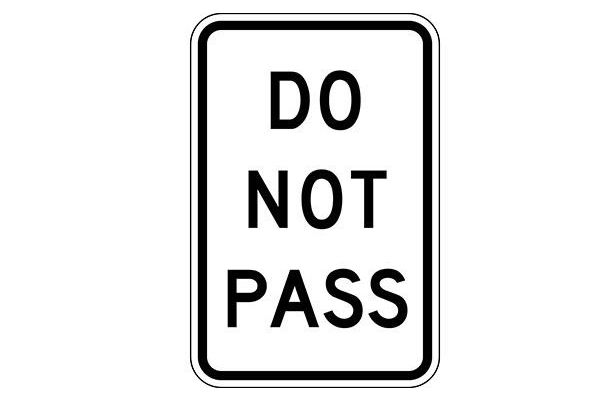
9. School Zone
The shape of this sign is unique; it is five-sided with black on yellow lettering, and is only used to warn of schools and school crossings. You must slow down, school zones have a posted speed limit that you must observe. Children may not always be careful so it is your responsibility to watch out for them. They may be playing or crossing the street, so you must be prepared to stop. There may be crossing guards present or school buses nearby as well.
You may also see the newer yellow-green placards instead of the usual black and yellow indicators in the same shape. These have improved visibility, providing a greater chance of child safety.
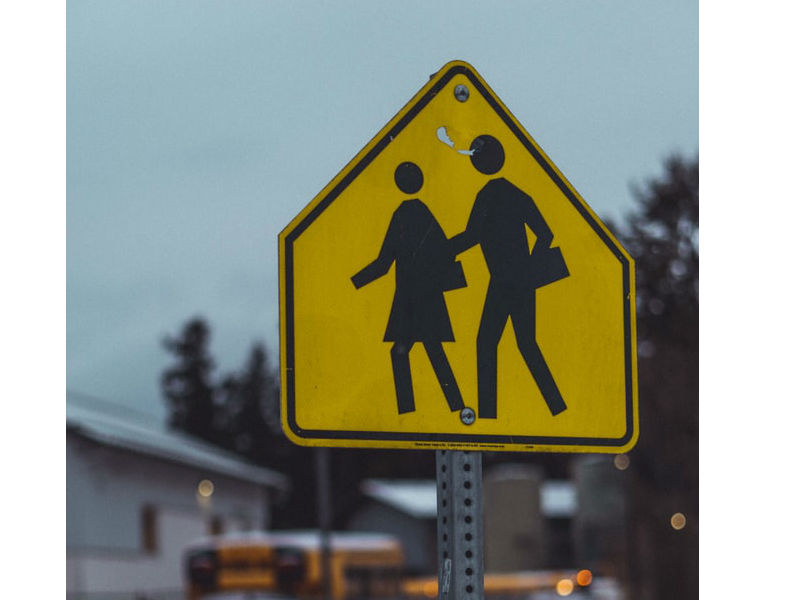
10. Deer Crossing
A deer crossing indicator indicates that deer are frequently in the area, so you should be sure to slow down and be on the lookout for them, especially at dusk. Not only can you injure or kill one, but they can do a lot of damage to your car, and possibly even injure you or your passengers.
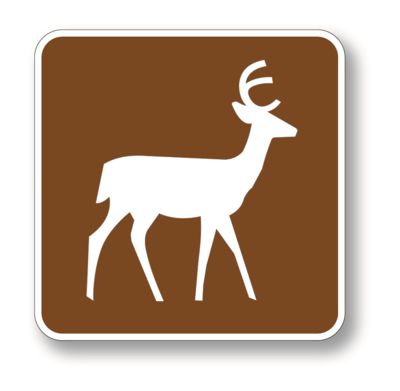
Final Thoughts
Warning signs are present to alert you that there is a change coming of which you need to be aware. These placards are posted to protect you as well as other motorists, road workers, and pedestrians. If you need worksite signage or other equipment to maintain safety, Worksafe Traffic Control Industries can help.
If you have any questions about what we offer as well as tapping into our experience and expertise to help you maintain a safe work environment, contact us online or call us at 1-802-223-8948. With nearly three decades of experience, Worksafe is first in safety, service, and smart solutions.

